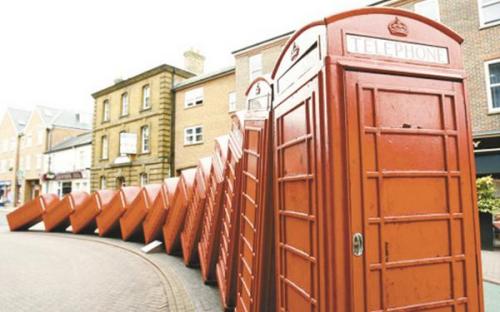 The topic of the Internet of Things has been very hot recently, and Bluetooth has become somewhat cold.
The topic of the Internet of Things has been very hot recently, and Bluetooth has become somewhat cold. According to the Bluetooth Technology Alliance (SIG), Google has confirmed that it will adopt Bluetooth Smart Ready technology in the new Android operating system in the coming months. Bluetooth Smart Ready is an advanced standard for Bluetooth technology. It is compatible with almost all Bluetooth-enabled electronic products and can also reduce energy consumption for smart devices running Android in the future.
At the same time, the Nexus 4 recently regained Bluetooth 4.0-compliant certification, paving the way for the advancement of Bluetooth Smart Ready.
Current Android does not support the Bluetooth 4.0 standard or its low-power mode, which means that current Nexus devices cannot support this standard. So Google stated during the I/O Conference that Google plans to release software updates supporting Bluetooth Smart Ready technology as soon as this July. Google currently has APIs open. Each new version of the API corresponds to the corresponding version of the Android operating system.
If everything goes according to plan, any Bluetooth-enabled Android device will use Bluetooth Smart Ready technology in the near future.
The remarkable feature of Bluetooth 4.0 is its low power consumption. It is said that Bluetooth 4.0 can be used for only one year with a single button battery, which will also be a great advantage for Bluetooth and WiFi. Energy consumption is the key to all IoT devices. Whether or not energy consumption can be solved determines the future of Bluetooth.
Of course, the market prospect of Bluetooth is related to the price and application scale. Only the price of the Bluetooth module is low enough to occupy the market in large scale. At present, mainstream chip manufacturers such as Qualcomm, Broadcom and Texas Instruments are actively involved in the development of Bluetooth chips.
From a technical perspective, the application areas of WiFi and Bluetooth and other short-range radio technologies are almost completely different, although at some point there will be overlaps. When we integrate these radio technologies that apply to different distances, what we see before us is the blood and bone of the Internet of Things.
Since its birth, Bluetooth has passed 20 years, and the advantages of industrialization have become increasingly apparent.
On the 9th of this month, ABI Research, a market research company, released a new research report showing that the current total number of wireless networking equipment has exceeded 10 billion units. It is expected that this figure will quadruple to reach 30 billion by 2020. At that time, the total population of the world is expected to be only about 7 billion.
ABI Research stated that wireless devices such as Bluetooth will be a key factor in building the Internet of Things. Analyst Peter Cooney said:
"The emergence of standardized and ultra-low energy wireless technologies is one of the key factors in promoting the development of the Internet of Things. With the promotion and standardization of semiconductor suppliers, the Internet of Things will truly enter our lives."
With 10 billion wireless connected devices, this number sounds enough, but it has not yet reached the full potential of the Internet of Things. The next five years will be a great time for the growth of the Internet of Things. In 2012, global shipments of Bluetooth products have reached 2 billion, and it is expected to rise to 2.5 billion in 2013. By 2018, total shipments of Bluetooth devices will total 32 billion units - this will implant the concept of Internet of Things in the minds of consumers.
ABI Research stated that all smart devices currently on the market are driving the development of the Internet of Things ecosystem and they will continue to play an important role in the future. However, the terminal is only a terminal after all, and the real development of the Internet of Things still depends on the joints of similar nodes and sensor devices.
And Bluetooth is a joint that is about to get through.
Each strand is made up of 20 white LED bulb realistic rose flowers on a clear string that extends over 7 feet in length. It is efficiently operated by 3 AA batteries which are not included and can provide up to 30,000 hours of light. It is flexible and suitable for both indoor and outdoor environments. There are two modes of operation to suit your preferences; a constant on setting or a flashing mode that is toggled between easily.
These lights make a perfect decoration for just about any holiday or occasion and can also be displayed year round in a variety of settings as a part of your décor. The options are endless thanks to the flexible and portable design which allows you to easily outline a door, a window, run along the wall or through the grass, string around a tree, hang on a mantle and just about anything you can come up with or imagine!
Decorative String Lights,Flower String Lights,Flower String Lights Indoor,Led Flower String Light
XINGYONG XMAS OPTICAL (DONGGUAN ) CO., LTD , https://www.xingyongled.com